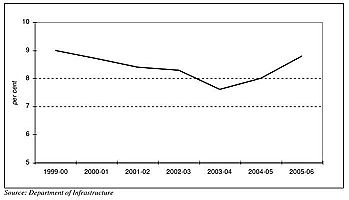There are several items I wish to discuss this evening:
Firstly, I would like to congratulate Enjoying Planned Retirement for their second Art and Craft Exhibition, held on the 12th of October. The exhibition, which marked the conclusion of Maroondah’s Seniors Week, attracted approximately 500 visitors and provided an opportunity to demonstrate the fun and energetic nature of Enjoying Planned Retirement. Last year’s art and craft exhibition received a grant from council and it was great to see EPR continue the exhibition for a second year.
On the 18th of October I attended the monthly Eastern Transport Coalition meeting. I’m pleased to announce that the group appointed me as Acting Chair through to the end of this year. This will allow Maroondah to strengthen its leadership role in advocating for sustainable transport in the eastern suburbs.
On the 29th of October I attended Maroondah’s forum for people with disabilities and carers. This is a quarterly forum which provides an opportunity for attendees to raise accessibility issues directly with council. The forum continues to experience strong community involvement and I would like to thank these attendees for willingly giving their time to create a more successful and accessible municipality. Community attendance at these forums does make a difference and the outcomes produced by the Maroondah Pedestrian Strategy and the Public Footpath Trading Policy, which is listed in this council agenda tonight, are testament to this.
On the 1st of November I met with Eastland Centre Management to follow up on a number of items that were discussed at the Bar None Expo that I reported on last month. It is encouraging that Eastland has already pursued recharge points for motorised mobility aids. The Recharge Program was developed in collaboration between Maroondah’s Scoot Wheel N Move Group and traders to provide facilities for motorised scooters and wheelchairs to be recharged. This improves the level of accessibility for people with motorised mobility aids. It is great to see that Eastland, as a major retailer and shopping destination, is now part of this program.
On the 13th of November I attended as council’s delegate a meeting of the Melbourne 2030 Councillor Reference Group. As part of this meeting I delivered a presentation on the Eastern Transport Coalition and an analysis of ‘Creating a City that Works’ a report commissioned by the State Government’s Commissioner for Environmental Sustainability. The presentation focused on the key areas that the ETC is pursuing, including the need for public transport improvements to enhance the liveability of Melbourne’s eastern suburbs. While it is clear that the MAV, as the peak body for local government, sees the ETC and hence Maroondah as a leader in the advocacy for sustainable transport, this an area we need to continue expanding upon particularly if we want to ensure the very best outcomes for the Ringwood Transit City and the Croydon Activity Centre.
Also on the 13th of November I attended the graduation evening of the FReeZA program at EV’s. FReeZA is a program that provides a dozen young people with the responsibility of organising, promoting and managing musical gigs and is just one of a wide array of programs supported by Council’s Youth Services team. It was great to hear each of the graduates provide an overview of their experiences of the FReeZA and particularly with the forthrightness they delivered. While the program may have been stressful at times, each of the participants certainly did learn something from being part of FReeZA and I would like to thank Youth Services for their continued dedication and support for our youth.
On the 14th of November I attended a Heatherdale Community Action Group meeting. It is pleasing to see that the Heatherdale community appreciates the ongoing work of council in regard to issues along Heatherdale Road. These issues have involved a wide cross section of council, including environmental health officers, building inspectors, planners and corporate services and I can assure this council that these efforts are definitely appreciated by the Heatherdale community.
Lastly, I was invited to officially launch Campaign Enable on the 14th of November. This campaign, which is organised by local community members and the Australian Federation of Disability Organisations, marks a turning point in advocacy with the campaign being managed, organised and conducted by people with a disability.
The campaign currently has three central aims including:
- Financial help for people with a disability looking for work or trying to keep a job.
- The development of a National Disability Employment Strategy.
- The introduction of a nation wide Access to Premises Standard.
It is important to note that these issues are required to allow people with disabilities to be able to enjoy the same of level of access experienced by members of our society. Campaign Enable, is not a campaign for special treatment – it is a campaign about ensuring that everyone has equal access and inclusiveness within society.
Campaign Enable allows all people to have a voice and I look forward to the ongoing efforts of the group.
